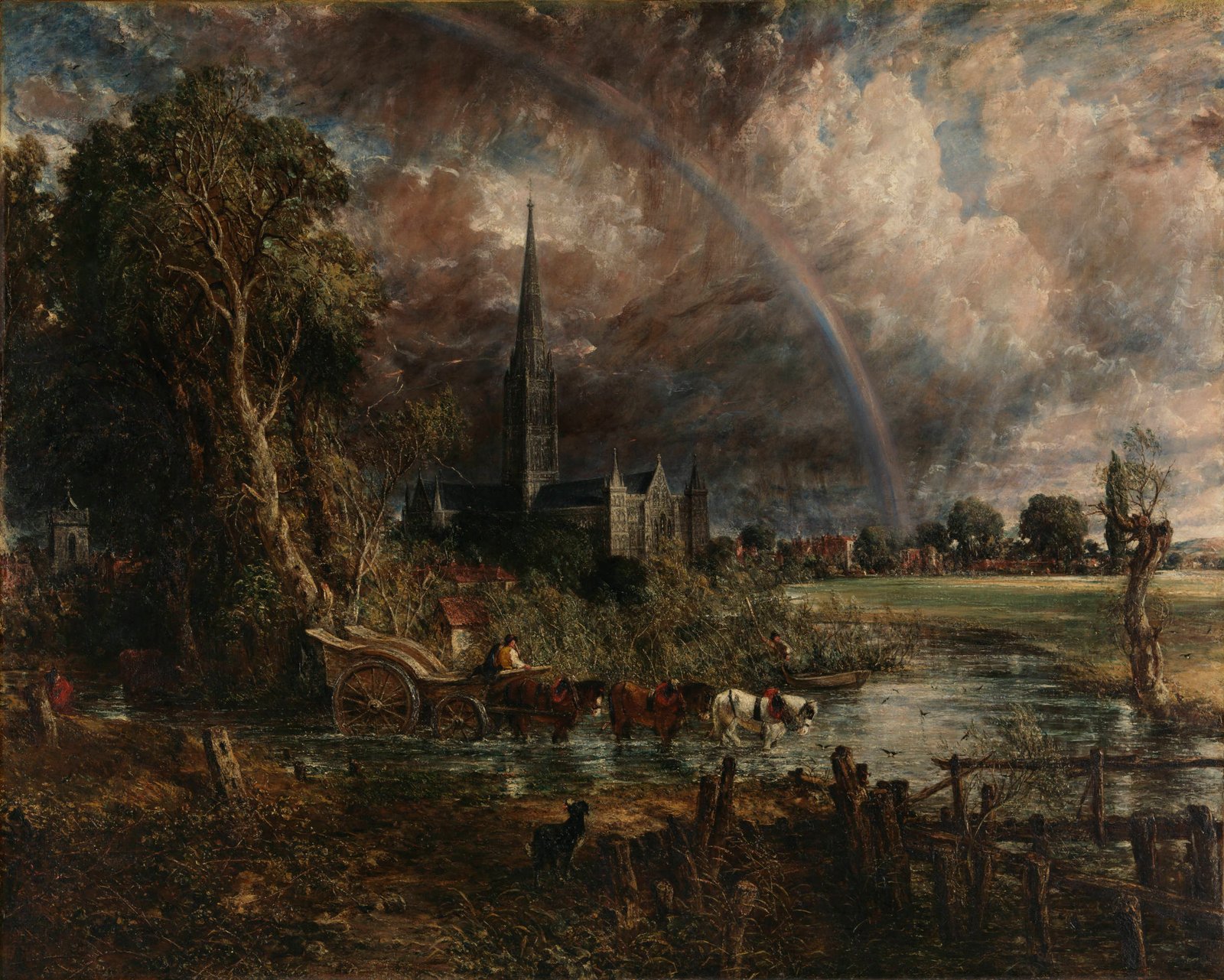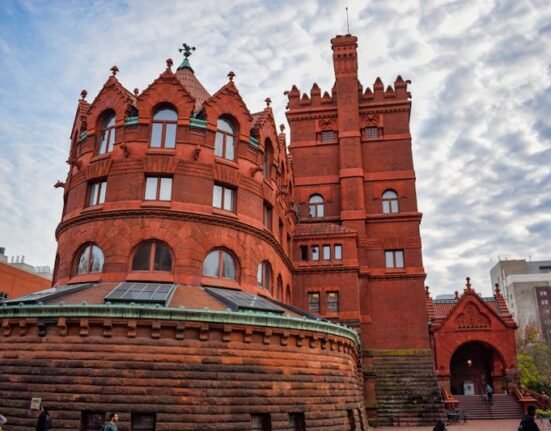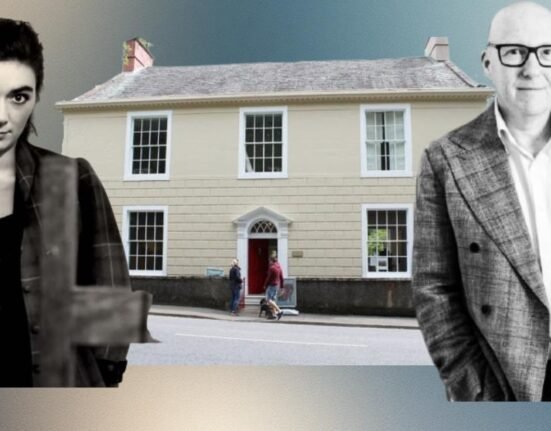In the spring of 1831, with the Royal Academy exhibition soon to open, John Constable pulled a fast one.
Exploiting his position as member of the Committee of Arrangement, responsible for hanging the pictures on display, he moved his painting, Salisbury Cathedral from the Meadows, right in the middle of Turner’s two canvases, Caligula’s Palace and Bridge and The Vision of Medea. Turner, whose Caligula had initially been meant to hang in the centre of the wall in the Great Room at Somerset House, was incensed.
Art historians such as Ian Warrell would call that moment ‘a key battle in a longer war’ — the rivalry that had long pitted the celebrated London upstart against the wealthier, better connected but sometimes under-appreciated Suffolk merchant’s son. Later this year, Tate Britain will delve into that ‘war’ with ‘Turner and Constable: Rivals and Originals’, an exhibition that examines the relationship between Georgian Britain’s two greatest artists through 170 paintings and works on paper, including Turner’s The Burning of the Houses of Lords and Commons, on loan from the Cleveland Museum of Art, in Ohio, US, which has not been seen in Britain for more than a century.
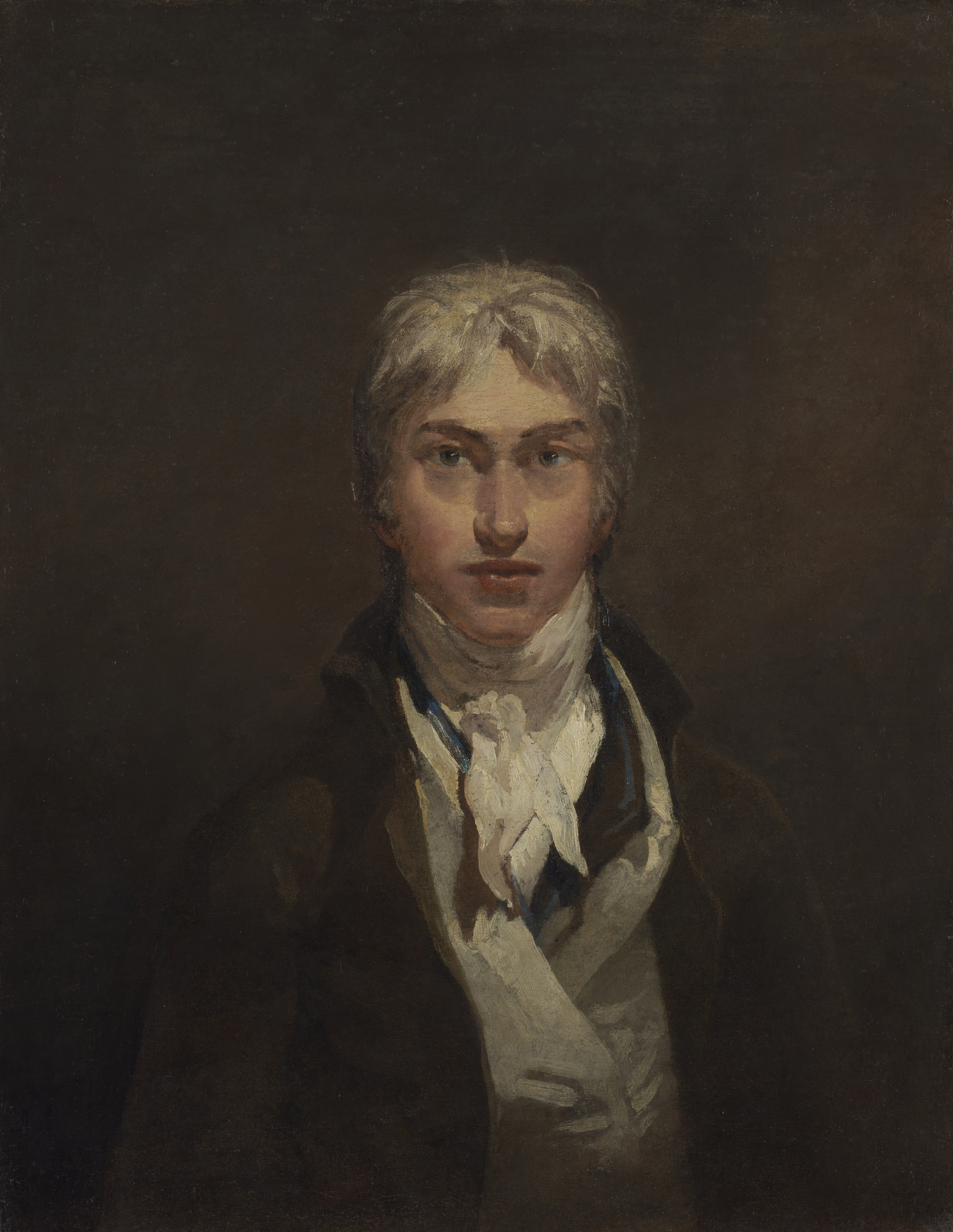
Turner’s Self Portrait was accepted by the nation as part of the Turner Bequest in 1856.
(Image credit: Tate)
Born a year apart, Turner in 1775 in Covent Garden, Constable in 1776 in East Bergholt, the two artists followed very different paths. Turner was a child prodigy, entering the Royal Academy Schools when he was only 14, exhibiting his first watercolour there a year later and being elected full Royal Academician in 1802 at 27 — an honour for which Constable, who was only admitted to the Academy Schools in 1800, had to wait until the ripe age of 52, having failed multiple times in the preceding years. Where Turner was acclaimed as a genius from the outset, Constable — his paintings often hung in lesser rooms at shows such as the RA exhibition — was at times neglected (The Hay Wain was overlooked by many major newspapers in 1821), or, worse, harshly criticised for his ‘grubs’ of paint and for his ‘snow’, the flecks of white he used to evoke light.
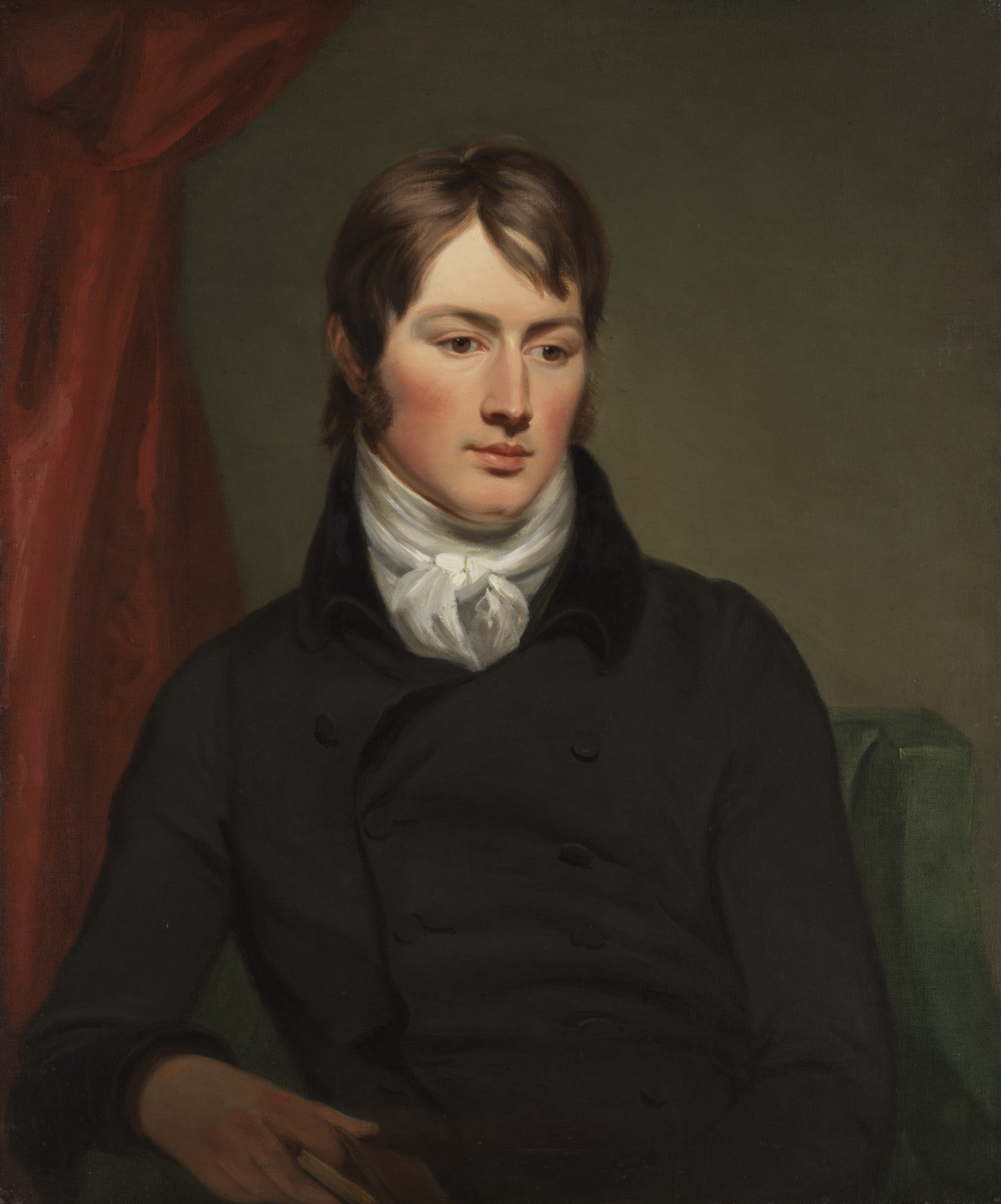
Constable was painted by fellow artist Ramsay Richard Reinagle in around 1799. The picture is part of the National Portrait Gallery’s collection.
(Image credit: National Portrait Gallery)
One favoured the drama and grandeur of Nature, the other the beauty and quietude of his native East Anglia, with the odd foray at Brighton and Hampstead. Yet, both were committed to landscape painting, which (in part because of them) was in the ascendant as Britain’s own artistic genre, and both approached it in an original way — different from everyone else’s, including one another. This made comparisons between the two almost inevitable. Writing about White Horse, the first of Constable’s six-footers in 1819, Robert Hunt of The Examiner, noted: ‘He does not give a sentiment, a soul to the exterior of Nature, as Mr Turner does; he does not at all exalt the spectator’s mind, which Mr Turner eminently does, but he gives her an outward look, her complexion and physical countenance, with more exactness. He has none of the poetry of Nature like Mr Turner, but he has more of her portraiture’.
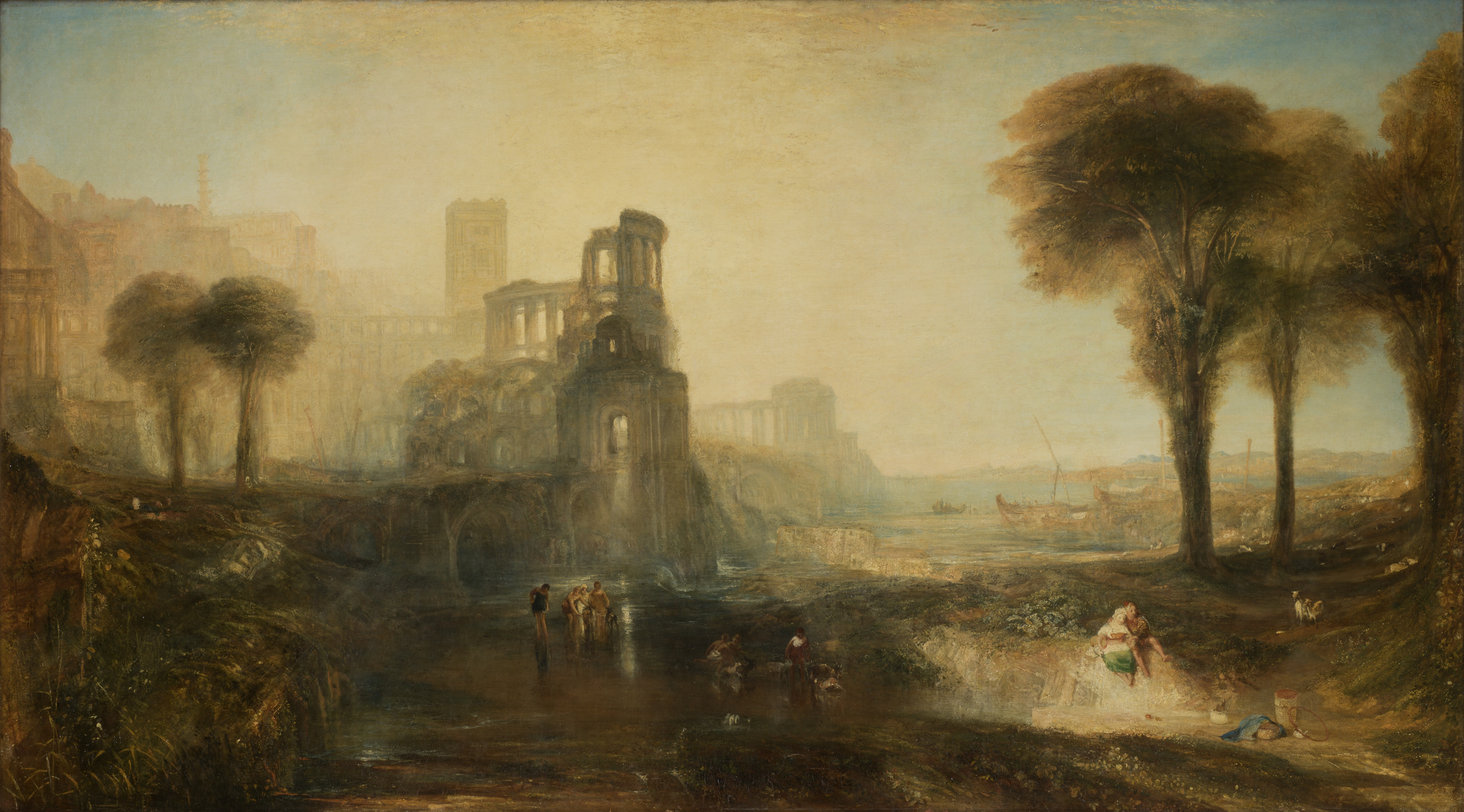
This painting and another work by Turner, ‘Vision of Medea’, were hung either side Constable’s ‘Salisbury Cathedral from the Meadows’ at the Royal Academy Exhibition of 1831.
(Image credit: Tate)
Other contemporary art critics were rather more vicious, using one artist to whack the other. More often, it was to the detriment of Constable, but not always: ‘Turner has a fine poetical scene but it is so outrageous in colour as even to eclipse all his former extravagancies,’ reported the Monthly Magazine in 1823. ‘These visionary absurdities are upon a par with much of the music and poetry of the day: affectation and refinement run mad. Constable’s fresh and powerful transcripts from nature are convincing proofs of her superiority to the sophistications of art.’
Even Constable’s dear friend John Fisher used Turner to spur on the Suffolk artist: ‘Dear Constable,’ he wrote in 1813, ‘I have heard your great picture [Landscape: Boys Fishing] spoken of here, by no inferior judge, as one of the best in the exhibition… I only like one better, and that is a picture of pictures, the ‘Frost,’ by Turner. But then you need not repine at this decision of mine; you are a great man, and, like Buonaparte, are only to be beaten by a frost.’
The two artists played into this rivalry — just as Constable had moved Turner’s Caligula in 1831, so would Turner add a bright red buoy to his seascape, Helvoetsluys, on Varnishing Day in 1832, to help it stand out against Constable’s The Opening of Waterloo Bridge (‘he’s been here and fired a gun’, was the latter’s resigned acknowledgement at having been outplayed).
And yet. ‘It has been customary to portray Turner and Constable as antagonists, but I think this was exaggerated, even during their own lifetimes,’ believes Nicola Moorby, author of Turner & Constable: Art, Life, Landscape. ‘As a bit of a slow-burner, Constable deliberately chose an alternative artistic path from Turner.’ He certainly defined himself in contrast to the Temeraire painter: ‘I feel deeply the honour of having found an original style & independent of him who would be Lord over all — I mean Turner.’ Nonetheless and even though he occasionally criticised Turner’s paintings — ‘my own opinion was decided the instant I saw it,’ he said of Dido and Aeneas — Constable could also be effusive with praise: as as David Blayney Brown remarks in ‘Fire and Water’: Turner and Constable in the Royal Academy, 1831, he found The Dort Packet-Boat from Rotterdam a picture ‘of singular intricacy and beauty…I think the most complete work of a genius I ever saw’.
The two artists were known to dine together and if Constable thought Turner ‘uncouth’, he also praised his ‘wonderful range of mind’. Although Turner’s (very unreliable) first biographer, Walter Thornbury, maintained that the painter didn’t much like Constable, when the latter was finally elected to the RA by one vote, it may have been Turner’s hand that made the difference. He certainly called on Constable to congratulate him: ‘We parted at one o’clock this morning, mutually pleased with one another,’ Constable told John Chalon.
Of course, Turner was aware (and possibly annoyed) that, on occasion, critics panned his work while referencing Constable and was mighty displeased at the 1831 hanging reshuffle at the expense of his Caligula — ‘Turner slew him without remorse’ at a dinner, reported the painter David Robert at the time. Overall, however, ‘Turner wouldn’t particularly have cared about what Constable was doing,’ believes Ms Moorby. ‘It wasn’t until Constable joined the elite ranks of the Royal Academy that they had much to do with one another and, by this point, most of their interactions would have actually been quite collegiate and centred around the same professional loyalties and goals.’
And sometimes both painters emerged as the winners from their much touted rivalry: ‘Fire and water,’ wrote the Literary Gazette in May 1831, when reviewing Caligula and Salisbury Cathedral from the Meadows. ‘Exaggerated… as both these works are, — the one all heat, the other all humidity, — who will deny that they both exhibit, each in its own way, some of the highest qualities of Art? None but the envious and ignorant.’
‘Turner and Constable: Rivals and Originals’ is at Tate Britain from November 27 to April 12, 2026. Tickets are on sale now

